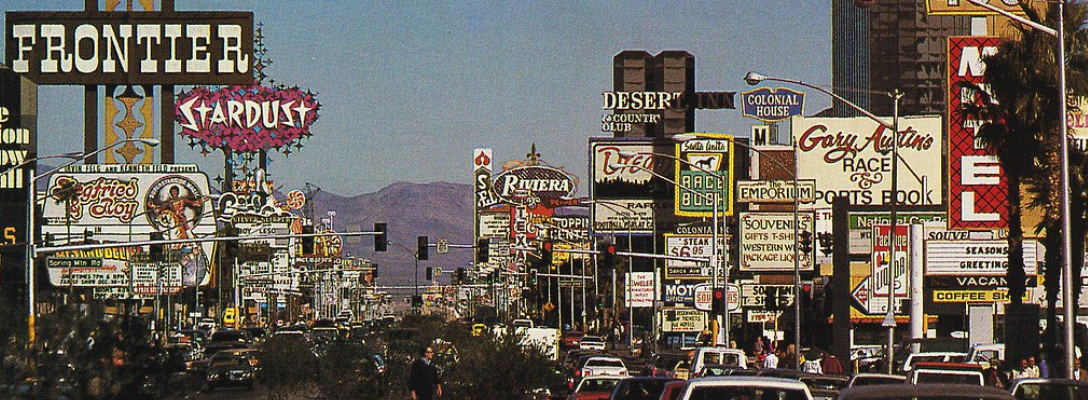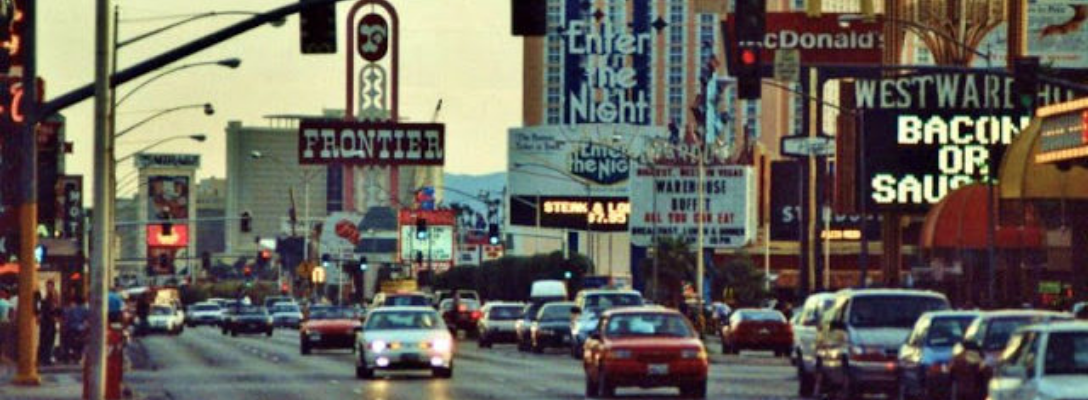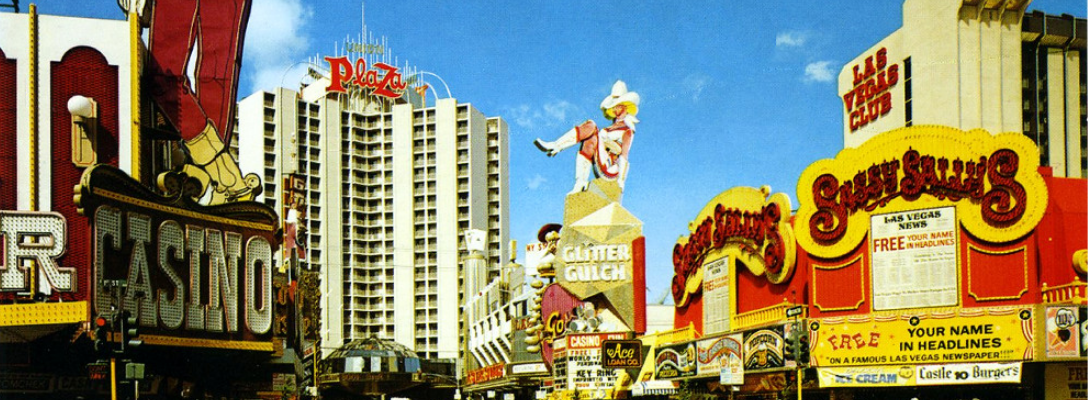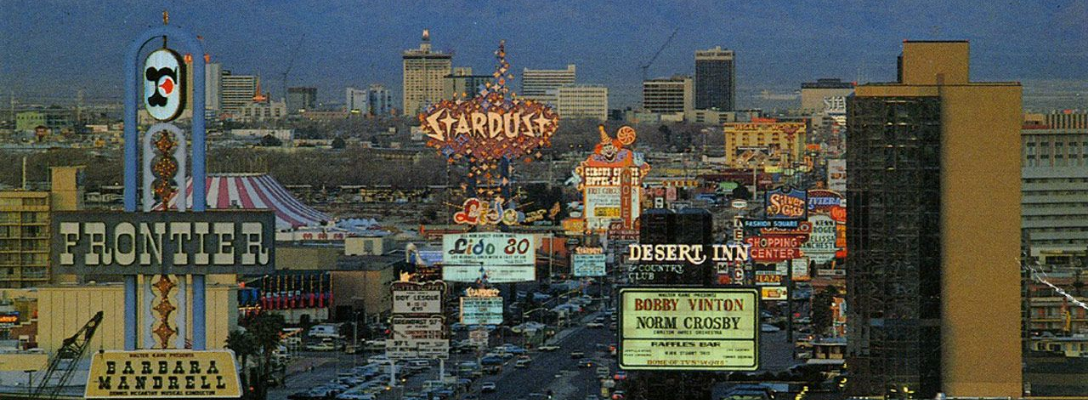The History of Las Vegas Circa 1980

Las Vegas, a city barely 50 years old by the mid-1950s, lived in the national consciousness as a place of possibilities. After all, anyone, at any time, could go to Vegas and strike it rich. The Strip was populated by hotels that many could name, although relatively few people had actually been there. And it seemed that Vegas had grown up, become comfortable in its own skin, adopted its own persona, and wasn’t about to change.
But Vegas of the ’50s and ’60s was just a first iteration. In the decades that followed, two men, in quite different ways, would be catalysts for sweeping revisions in the story of Las Vegas. It would undergo not one but two significant transformations in coming years.
A Look into Las Vegas in the 1980s
A Billionaire Paves the Way
Ever since 1931, when gambling was again legalized in the state of Nevada, organized crime had been deeply involved in whatever happened in Las Vegas. The legendary hotels that were built during the city’s first great boom — the Sahara, Sands, Desert Inn, Riviera, Dunes, Tropicana, Stardust, and others — were inseparably tied to the underworld.
A turn of events began in 1966. Eccentric billionaire Howard Hughes checked into the Desert Inn and refused to leave. Conflicts with the owners ensued. So Hughes did what any billionaire would do: he bought the hotel. The eighth floor became his center of operations, and the ninth floor was his residence. Over the next two years, Hughes bought several more hotels in Las Vegas. This was a significant departure from the Vegas norm: a respectable businessman was now running hotels instead of the mob.
The Nevada state legislature took notice and liked what it saw. The 1969 corporate gaming law made it possible for corporations to operate gambling establishments in Las Vegas. The door was now open for corporate casinos run by Hyatt, Hilton, and other companies to set up shop and perhaps begin to push out organized crime. Their entertainment included such Vegas icons as Tom Jones, Siegfried & Roy, Liberace, and Elvis, who performed over 800 sold-out shows between 1969 and his death in 1977. More than 40 years later, there is no single celebrity more closely tied to Vegas than the King himself.
 Credit: Hans Molenaar
Credit: Hans Molenaar
Crackdown
In the mid-1970s, both the federal government and state of Nevada became less willing to tolerate mob activity in Las Vegas. They turned their attention to two men in particular who were placed in Vegas by high-ranking mob members in Chicago. Frank “Lefty” Rosenthal ran the hotel scene, while Anthony “The Ant” Spilotro was in charge of street rackets. In 1978, Rosenthal was denied a gaming license, and Spilotro’s name was entered into the “black book,” forbidding him entrance into any Vegas casino. Spilotro was also tried on murder charges, but the feds couldn’t get a conviction. It seemed, however, that someone within the organization wasn’t happy with him either. His battered body was found buried in an Indiana cornfield in 1986.
The mob element that had squeezed the city for decades was finally relinquishing its grip. But that didn’t spell immediate success for the neon metropolis.
An Economic Downturn
In the late 1970s and early 1980s, for the first time since the end of WWII, Las Vegas went into a bit of an economic slump. Several factors contributed to this: the legalization of gambling in Atlantic City in 1976, the energy crisis, and TWA’s canceling of its nonstop flight service from New York in 1983. Although the city didn’t suffer significantly, the upward trajectory that had led to considerable growth and prosperity over several decades finally leveled off. Many wondered if the glory days of the ’50s and ’60s were gone forever.
They didn’t have to wait long. Unbeknownst to anyone, Las Vegas — the City of Second Chances — was on the threshold of one of the most remarkable transformations in the city’s 75-year history.
 Credit: Over50Vegas.com
Credit: Over50Vegas.com
Rebirth
Stephen Allan Wynn was born in New Haven, Connecticut, in 1942. His father ran a chain of east-coast bingo parlors, and Wynn took over the business in 1963. But in 1967, he bought a small stake in a Las Vegas hotel and moved his young family west.
Wynn worked in the hospitality and real estate industries in Vegas for the next 20 years. Meanwhile, he was slowly formulating his own vision of what Las Vegas could be. Wynn had the audacity to believe that the city could be much more than a place people came to gamble. He dreamed of mega-hotels on the Strip and more limousines per block than any other city in the world.
Wynn put his money where his mouth was, opening The Mirage in 1989. No one had ever seen anything quite like it. It was extravagant, even by Vegas standards. And not just because it was the largest hotel in the world. In addition to 3,000 rooms, this over-the-top resort had an indoor forest, a huge waterfall, and an outdoor volcano. Within a few months, it surpassed Hoover Dam as the top tourist destination in Nevada. It also ended a 15-year slump in construction on the Strip, where no major resort had been built since the early ‘70s.
It would be difficult to overstate the effect that The Mirage had on Vegas. Wynn had raised the bar significantly for any future hotels on the Strip, and visitors to the city now expected much more than a comfortable room, casino, dinner, and a show. The following decade saw Las Vegas — particularly the Strip — practically rebuilt from the ground up. The Mirage played a pivotal role in changing the landscape of the city.

Taking a cue from Wynn, the venues that began to appear on the Strip were nothing like the mundane, forgettable hotels in any other American city. They took the shape of medieval castles and Egyptian pyramids. One could see a canal from Venice, the Eiffel Tower, the Statue of Liberty, and the New York Skyline. Gold facades gleamed in the desert sunshine. A spectacular fountain show became a main tourist attraction. Some of the most recognizable hotels of Las Vegas were constructed in just 10 years: Excalibur, MGM Grand, Treasure Island, Luxor, Monte Carlo, New York-New York, Bellagio, Mandalay Bay, Venetian, and Paris.
History always provides some perspective. The biography of Las Vegas, now in its 115th year, is quite revealing. From a town that began with just a few simple wooden structures at the dawn of the 20th century, has evolved through world wars and a depression, the grip of organized crime, economic prosperity and economic slumps, and sweeping changes that penetrated the very heart of the city.
What will be the next great phase? It’s anybody’s guess, but we’re thinking it’s now. One thing is for sure: Las Vegas, the City of Lights, is here to stay. At Circa Las Vegas Resort & Casino, we aim to honor the golden ages of Las Vegas circa 1940, 1980, 2020 and more, so stop by for some vintage Las Vegas vibes and make some history of your own.
